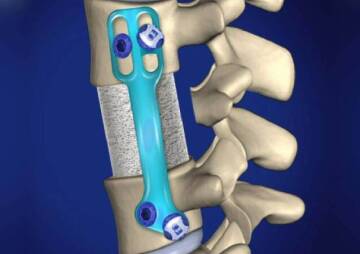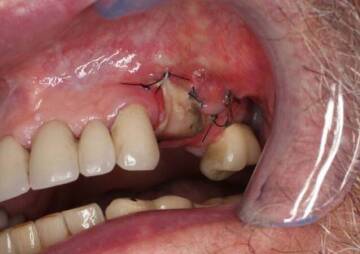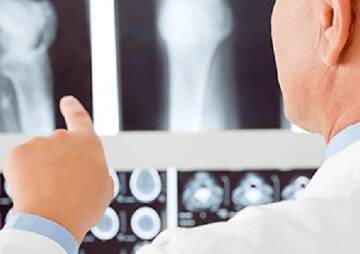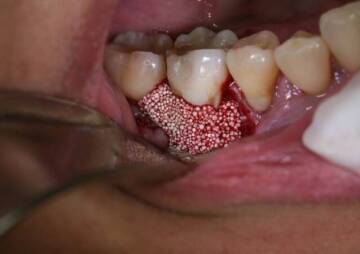-
Category
Craniomaxillofacial Surgery
Orthopedic Surgery
Spine Surgery
Orthopedic Implants
Hip Surgery
Knee Surgery
Pectus Excavatum
Bone Graft
Disinfectants
Healthcare
Trauma Implants
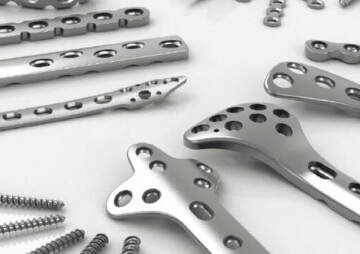
Orthopedic trauma refers to severe injury to the musculoskeletal system caused by an external force. In this article, we want to introduce the trauma implants that surgeons use to treat orthopedic traumas
Every day, a variety of external and internal factors influence our body's physical and physiological systems. The main factors affecting this system are an unhealthy lifestyle, poor nutrition, bad habits, as well as our job and profession. The musculoskeletal system is also one of the body's vulnerable systems easily damaged by various factors. Orthopedic trauma is the term used for this damage. In a general definition, orthopedic trauma refers to damage to the body's musculoskeletal system, including bones, joints, and even soft tissues, due to an external force such as an accident or sudden fall. These injuries can be severe enough to be life-changing or mild enough to be treated with rest alone. Depending on the severity of the injury, orthopedic surgeons choose a range of treatments. Surgery, joint replacement, and the use of trauma implants are the surgeon's last option. This article will go over the different types of orthopedic injuries and the best trauma implants for them.
Common Reasons for Orthopaedic Trauma
Aside from accidents, too much stress on one part of the skeletal system can result in problems for the person. Athletes who experience injuries over the short or long term are an excellent example of this. In addition, everyday wear and tear, as well as some degenerative bone diseases like osteoarthritis, can cause damage to bones and joints in the elderly. But common causes of orthopedic trauma include:
- Sudden falling;
- Injuries during sports, especially football or basketball;
- Car or motorcycle accident;
- Natural disasters;
- Physical violence.
Orthopedic Trauma Categories

Fractures and other types of bone and joint damage can be severe. And it can be mild at first, but it can develop into more severe problems over time if not diagnosed early. But in general, injuries occur in the following ways: breaks, fractures, dislocations, Impingement, hernia, and sprains. Orthopedic surgeons have classified acute orthopedic trauma into several types to determine the best treatment options. Here are some common acute orthopedic injuries:
Meniscus tear
This is one of the most common injuries in professional athletes as well as the elderly. The meniscus is a soft cushion-like piece of cartilage in the knee that stabilizes and protects the knee bone from wear and tear. Knee sprains can cause meniscus tears.
Sprained Ankle
Ankle sprains are injuries to the hard tissue bands or ligaments that surround the bones of the foot. This injury commonly happens when the ankle twists or turns wrongly.
Labral tear
The labrum is a tissue similar to the meniscus of the knee (almost a combination of ligament and cartilage tissue) attached around the edge of the glenoid cavity. Occasionally, during intense activity, the labrum becomes entrapped between the head of the humerus and the edge of the glenoid cavity, causing the labrum to tear.
Plantar fasciitis
The plantar fascia is a long, thick connective tissue located just under the sole. This ligament pulls from the heel to the bottom of the toe, causing the sole to arch—the destruction and rupture of this tissue results in intense pain.
ACL tear
The anterior cruciate ligament (ACL) is one of the four primary ligaments of the knee. It is placed inside the joint and connects the femur to the tibia. The most prevalent mechanism for an ACL rupture is the rotation of the knee with significant contraction of the quadriceps muscle when the foot is completely on the ground.
Rotator cuff tear
A rotator cuff is a group of shoulder muscles that stabilize the shoulder joint and rotate the arm in different directions. Stretching and rupture of the rotator cuff muscles usually occur in athletes over 40 who engage in handball, swimming, weightlifting, and baseball.
Tennis elbow
Tennis elbow is caused by inflammation of the muscular tendons outside the forearm, which cause movement of the wrists and fingers. This problem is the most common cause of elbow pain that is felt outside the elbow. The reason for this naming is the high prevalence of this condition among tennis players.
Compression Fracture
These are fractures that are caused by severe external shocks such as accidents or falls. Fractures of the hand, foot, pelvis, and hip bones are well-known types of compression fractures.
Treatments of Orthopedic Trauma
Orthopedic injuries are usually not life-threatening but can completely change everyday life. Therefore, seeing an orthopedic doctor and getting a diagnosis and treatment for these disorders as soon as possible can be highly beneficial to the patient. If the injury is minor, the doctor will prescribe medication and physiotherapy. However, surgery is recommended if the trauma is severe, such as a fracture or tear of a bone or joint. Orthopedic surgeons in orthopedic surgeries use unique implants and prostheses for different cases. Here we will introduce special trauma implants.
Types of Trauma Implants

Trauma implants play an essential role in repairing internal fractures and replacing damaged joints. But implants are produced under different brands and with different qualities. The use of quality trauma implants is important in improving the outcome of the surgery. The implants offered by Health News Center Co. are high-quality products compatible with the most modern methods available. Here are some of these trauma implants distributed by Manib:
Plates
Plates are highly significant in compression fractures. The plates bring the two sides of the broken bone closer together, resulting in a better and faster weld. In addition, some plates, such as DCP, exert less pressure on the bone surface, decreasing injury to the pericytes that house the blood veins in the bone. As a result, the blood flow to the damaged bone is restored, resulting in better repair. Available plates include:
- Anatomical plates
- Osteotomy plates
- LCP plates
- Round hole plates
- DHS/ DSC plates
Screws
Screws are often used to fix the plates to the fracture site. When tightening the screw on the plate, the screw head slides in this part and forces the plate to move along the bone, creating a dynamic force on the broken pieces. There are several types of trauma screws that you can purchase at your surgeon's discretion.
Interlocking Nail System
These are metallic implants used for the repair of traumatic long bone fractures. Today, these implants are widely used in the orthopedic world, and the surgical outcomes that result from their placement are very satisfactory. There are different types of implants such as:
- Cannulated femoral nail
- Cannulated tibia nail
- Proximal femoral nail
- Titanium elastic nail
- Femoral/tibia end cap
External Fixation
External fixation is a surgical technique that immobilizes bones to allow a fracture to heal correctly. In this approach, pins or screws are inserted into the bone on each side of the fracture. The different products of this method are:
- Rod
- Schanz Screw
- Universal clamp/ Stainless Steel
- Joint Clamp/ Stainless Steel
- Mini Clamp/ Stainless Steel
- Universal Clamp/ Aluminium
- Mini Clamp/ Aluminium
- Humerus/ Radius/Wrist External Fixation System
Steinman pins
These pins usually made from implant grade stainless steels and used for skeletal traction of femoral fractures. These implants are used primarily in elderly patients with weak bones because this method reduces implant displacement and infection of pin sites.
Bone Staple
A bone staple is a type of fastening device that consists of two or more entry points into the bone that is linked together. These implants hold fractured bones or artificial joints together.
Drill bits
Drills are cutting tools used to create holes in the surface of the bone or other parts to insert implants and screws. Drill bits are available in various sizes and shapes. They can be used to drill a variety of holes in various materials.
Synthetic Bone Graft
Sometimes the severity of a bone injury or defect is so severe that doctors have no choice but to perform a bone graft. Grafts can be taken from a person's own bones (pelvis, legs, or ribs) or a donor, or they can be completely artificial. Health News Center offers high quality and the best synthetic, porous, osteoconductive, and bioactive bone substitute for filling and/or reconstructing bone defects. You can find Health News Center bone substitutes in the following forms:
- Powder
- Granule
- Block
- Stick
- Cylinder
- Wedge
The Takeaway
Orthopedic trauma is a common and inevitable happening in people's lives. You may also have an ankle sprain or injury to your knee or elbow due to various factors, such as falls or unexpected events. These situations are part of orthopedic trauma caused by an external impact that results in a musculoskeletal fracture, strain, or hernia. Under these circumstances, the orthopedist will use surgery to fix these conditions. Implants, prostheses and plates are among the tools that are widely used in orthopedic surgery today. According to the orthopedic surgeon's discretion, different types of trauma implants are used in different situations. These implants are manufactured in a variety of forms and sizes, as well as various quality. Health News Center trauma implants are offered in different categories and have excellent quality. Therefore, you can get the best results from orthopedic surgeries by choosing them. If you have questions about the products, leave comment so we can guide you.


